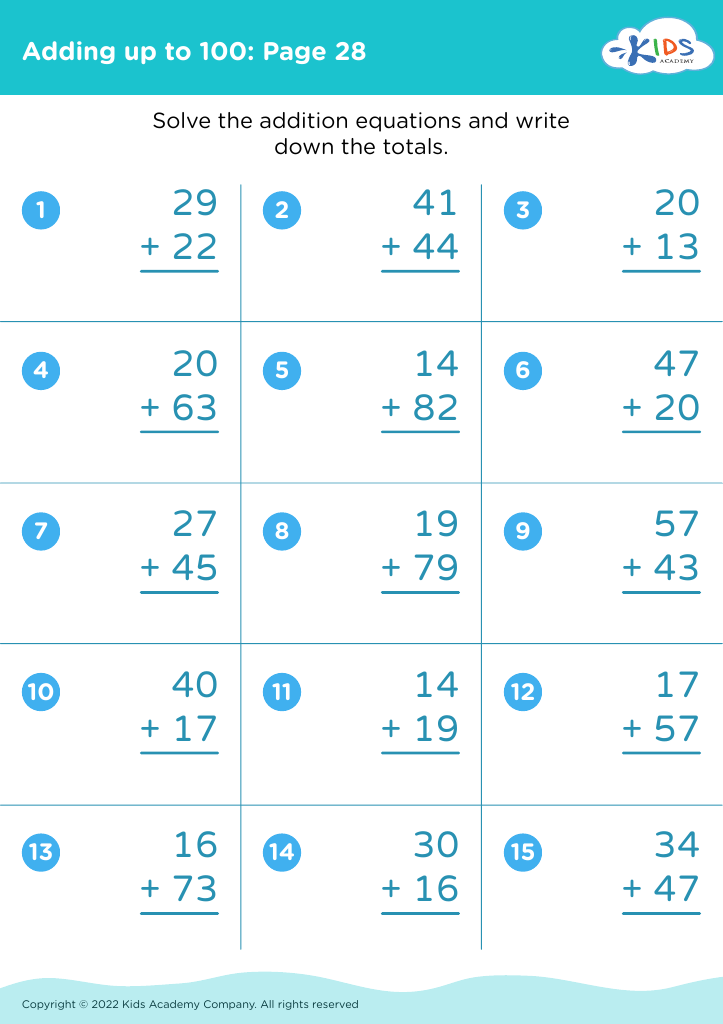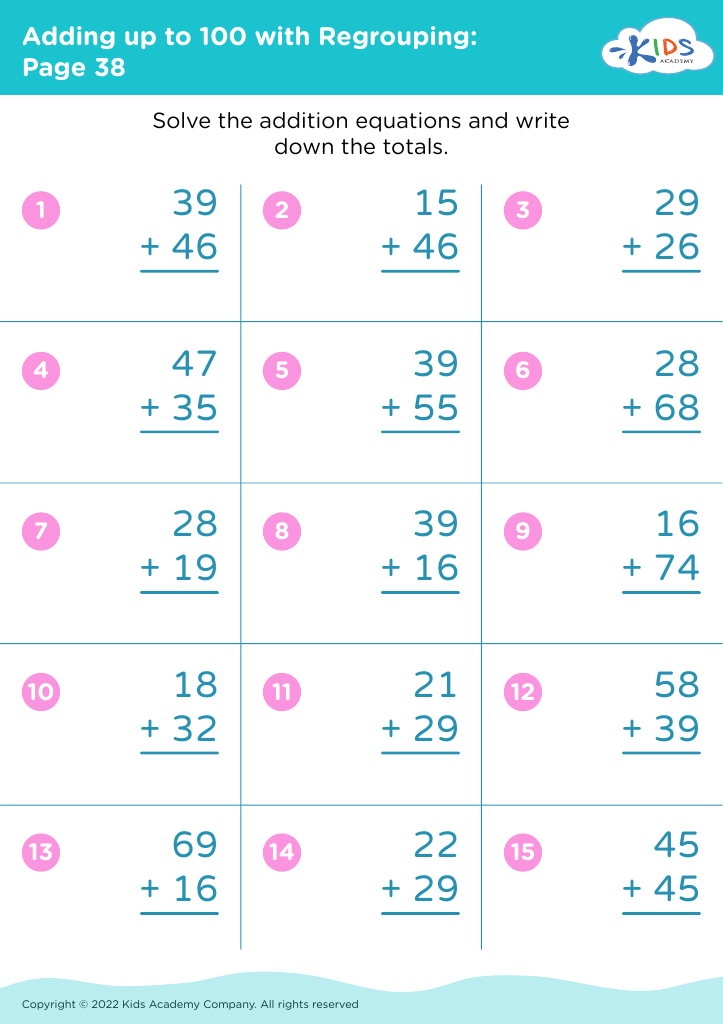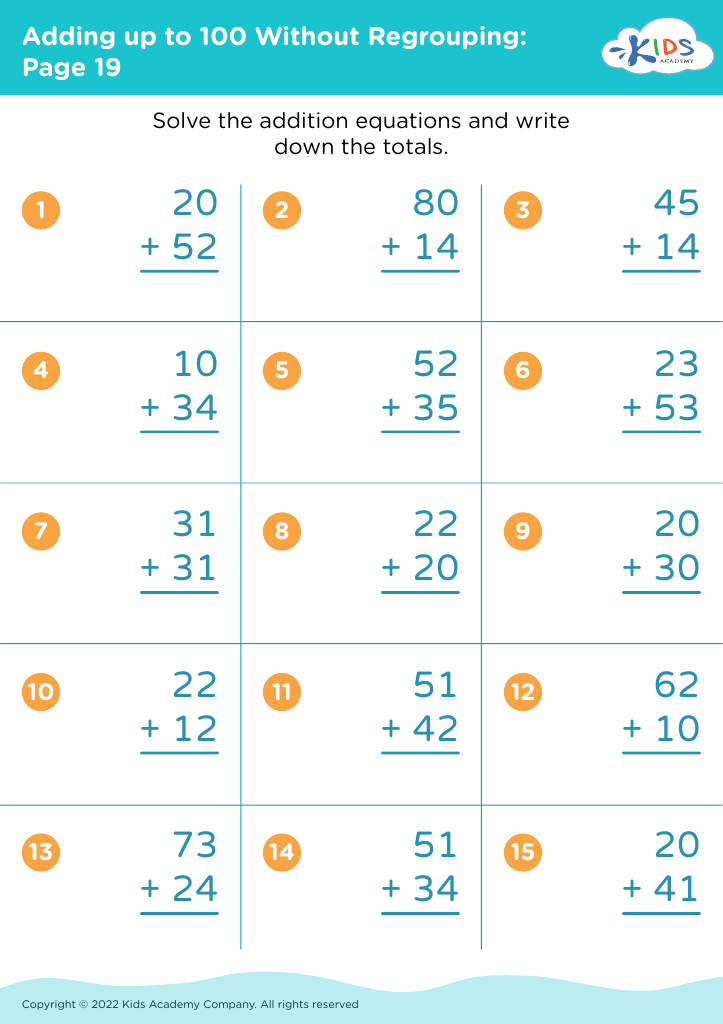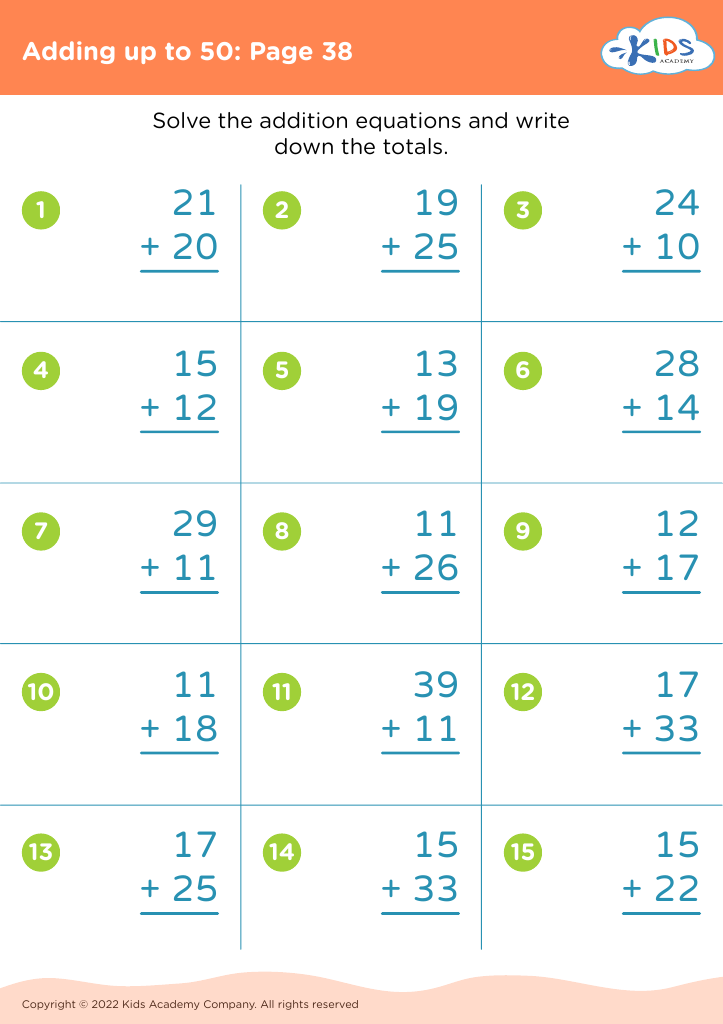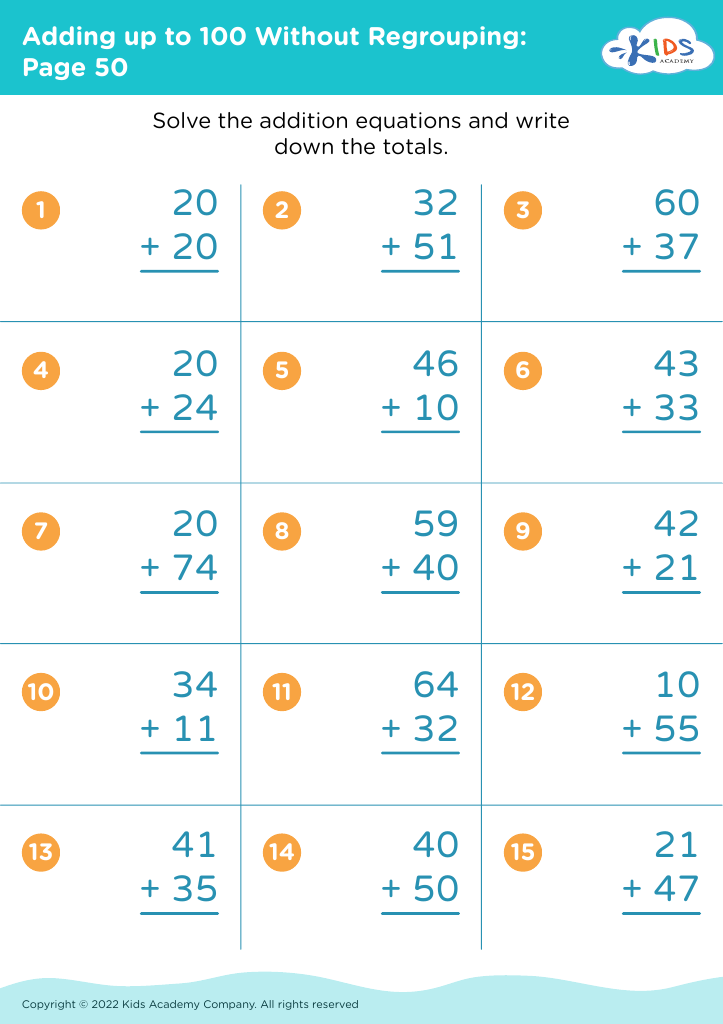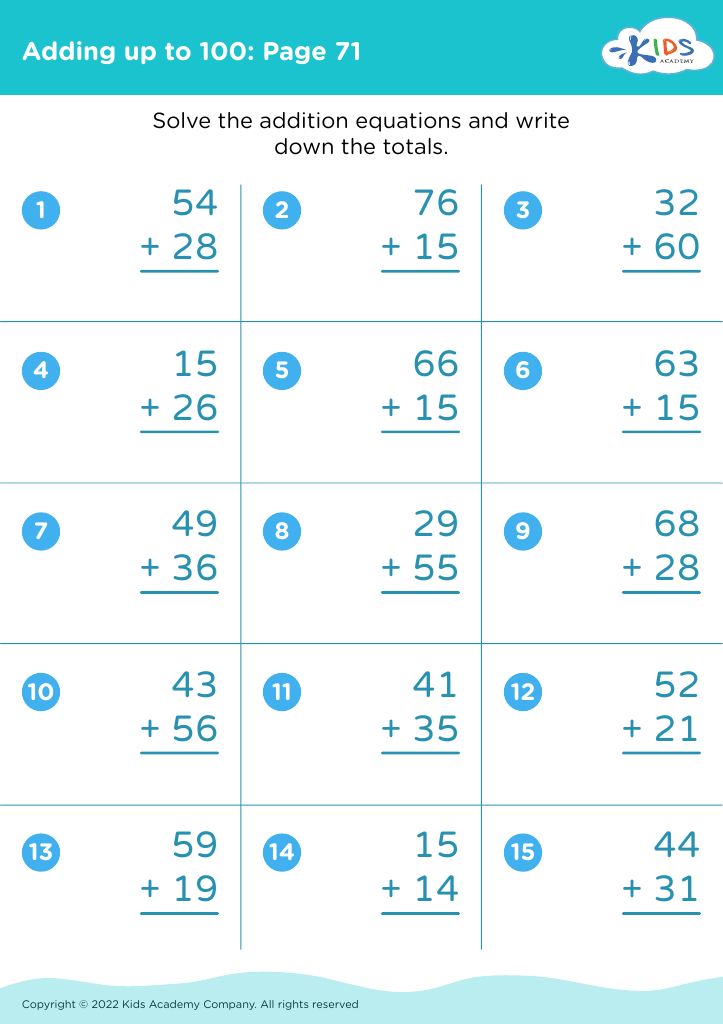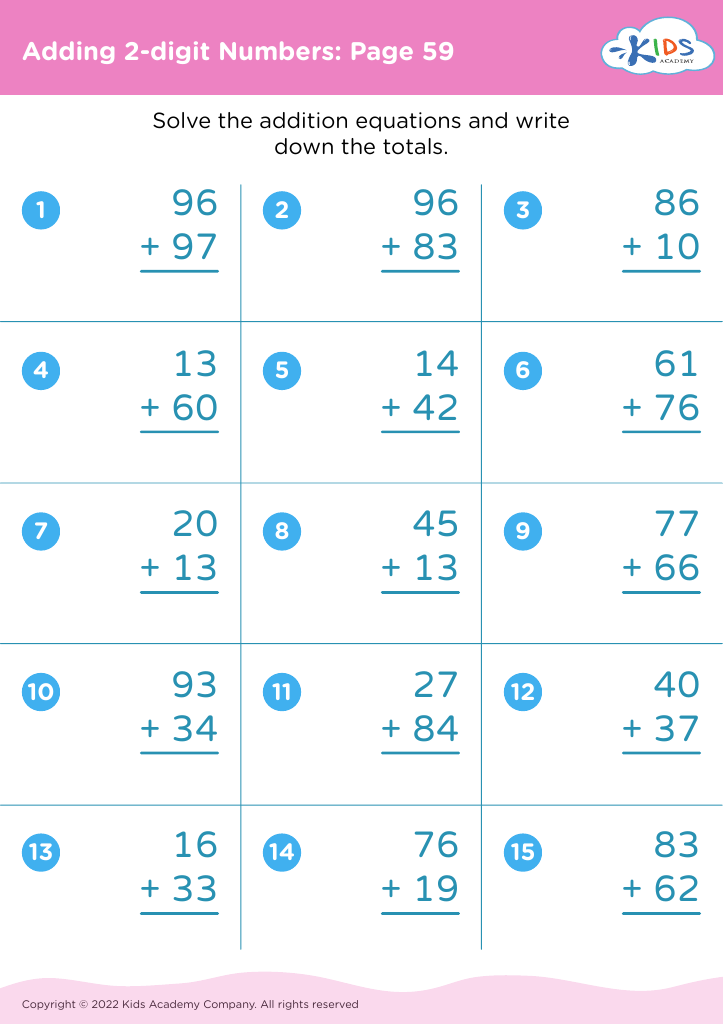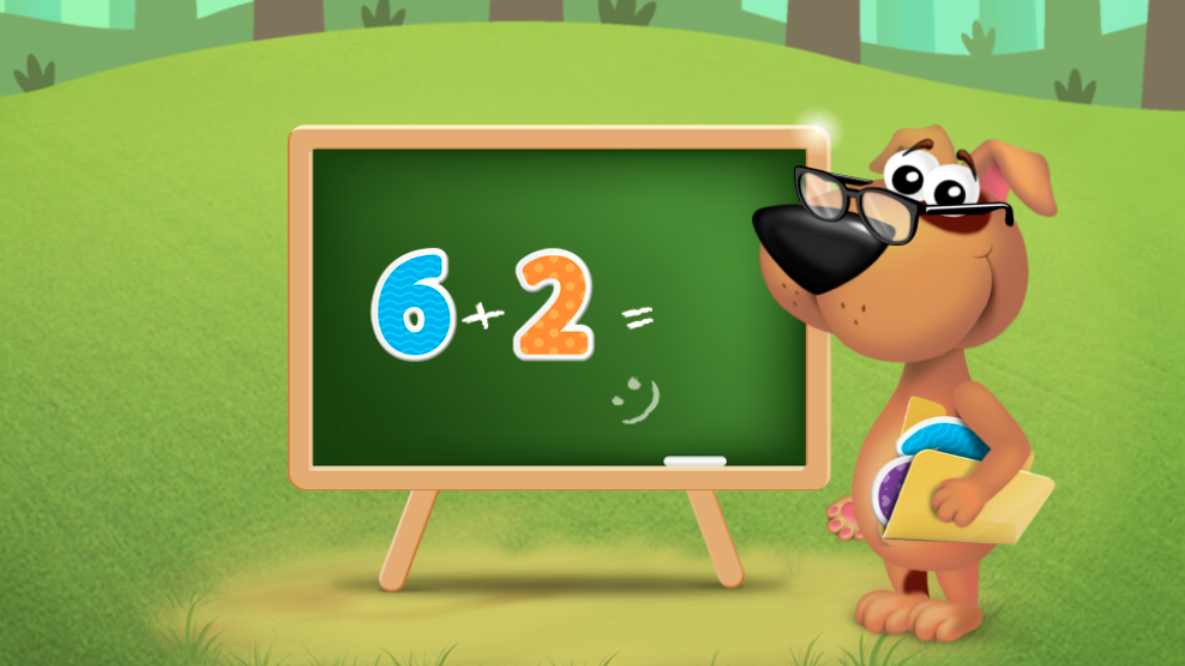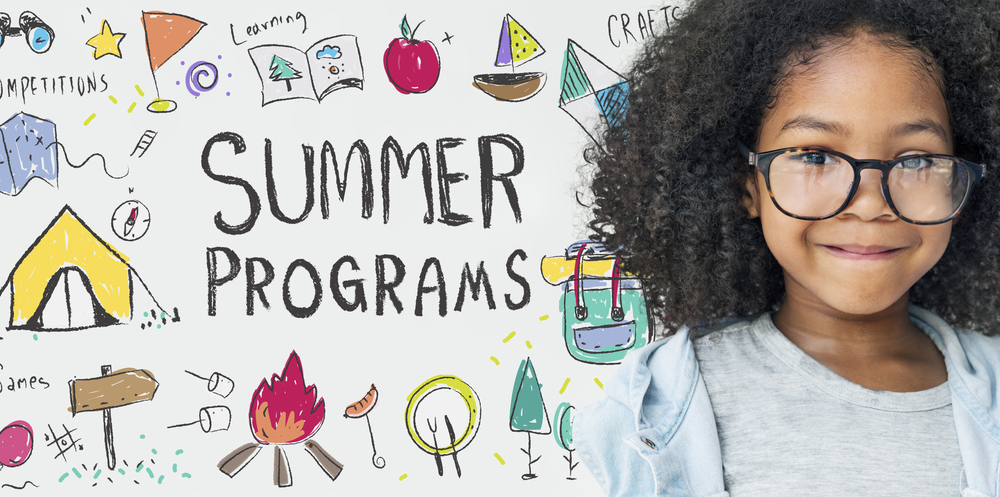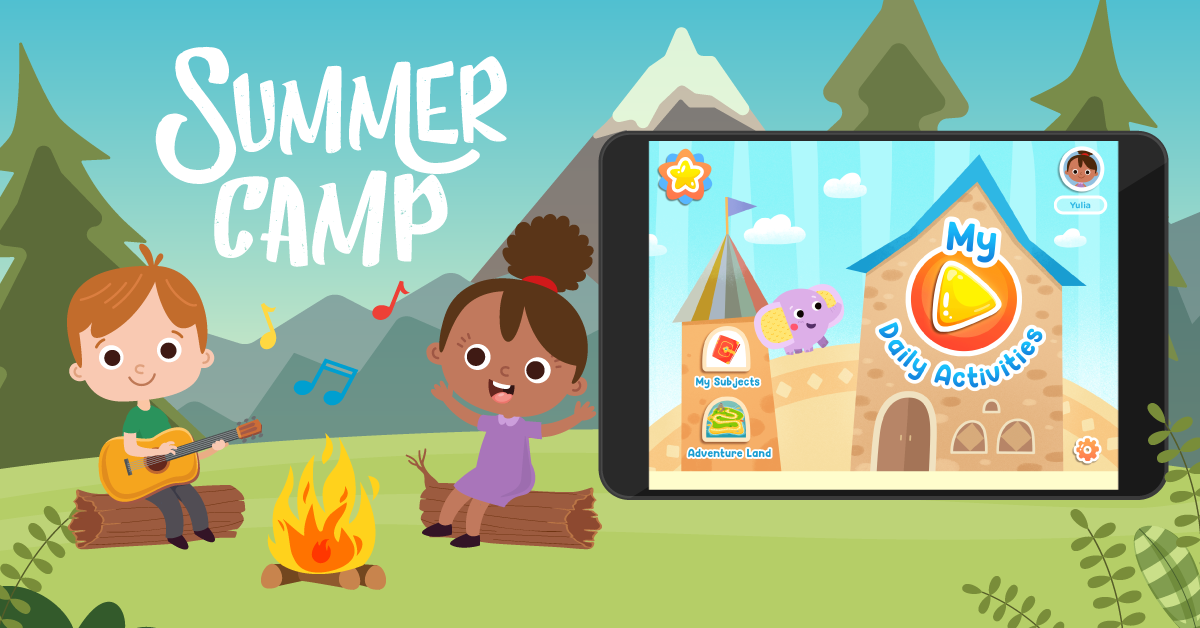Identifying equivalent fractions Addition & Subtraction Worksheets for Ages 6-8
7 filtered results
-
From - To
Welcome to our Identifying Equivalent Fractions Addition & Subtraction Worksheets, perfect for children aged 6-8! These engaging worksheets are designed to help young learners understand and master the concept of equivalent fractions while also practicing their addition and subtraction skills. Each activity encourages critical thinking and problem-solving as students identify and work with fractions that represent the same value. Our worksheets promote a fun learning environment, enabling kids to build confidence in their math abilities. Explore our collection to find printable resources tailored to your child's educational needs and watch them thrive in their understanding of fractions!
Identifying equivalent fractions is a fundamental skill in mathematics, especially for students aged 6-8. Parents and teachers should care about this concept because it forms the building blocks for more advanced mathematical understanding. By recognizing equivalent fractions, children learn to see relationships between numbers, which is crucial for developing strong problem-solving skills.
When children grasp equivalent fractions, it enhances their abilities in addition and subtraction, allowing them to combine and compare fractions with ease. This knowledge is not only essential for their current curriculum but also sets the stage for success in decimals, percentages, and more complex operations in the future. Understanding fractions is directly tied to real-world applications, including cooking, budgeting, and measuring, which highlight the practical importance of mathematical literacy.
Moreover, mastering these concepts can boost a child's confidence in mathematics. When children feel competent in their skills, they're more likely to engage with and enjoy math, creating a positive feedback loop. By placing emphasis on equivalent fractions in early education, parents and teachers contribute to a solid foundation that empowers students for mathematical success throughout their educational journey. Prioritizing this understanding ultimately nurtures a generation of capable and confident learners.

